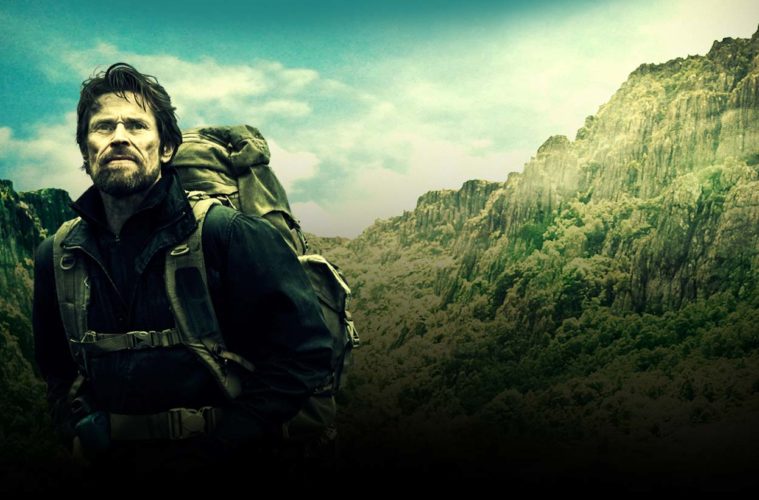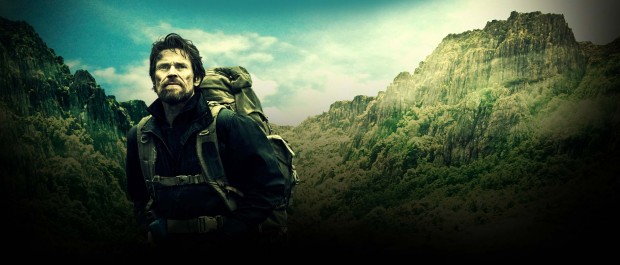
A quiet film doesn’t have to be without intensity or allure. Daniel Nettheim‘s The Hunter stands as a great example of a brooding darkness that draws you in and sticks with you. Willem Dafoe plays a hunter on the search for a real, live Tasmanian tiger which has long been extinct. A lot of unconfirmed sightings exist, but nothing solid, so he is hired to track it down in Tasmania. The film is equal parts environmentalism, history lesson, and riveting ‘what if’ storyline. During SXSW I had the opportunity to sit down with Nettheim and we discussed the footage shown, whether he added dialogue to show off Dafoe’s voice, the training that went into it the role, and much more.
The Film Stage: This film is very quiet, dark and the premise itself is somewhat unusual. There was obviously quite a bit of research done for this film. Talk about Willem [Dafoe]’s preparation for this role. What kind of training did he go through? If any. Did he bring in his own repertoire or did you have some suggestions?
Daniel Nettheim: Willem and I spent the first bit of time talking about the script and the story. I was still working on the script when he came on board so we got to talk about the character a bit. But when it got closer to the shoot, it started to become about the practical reality. I think, on a phone call we had about a month before he came out to Australia, he kind of said, ‘Look, Daniel, I’ve spent quite a bit of time outdoors but I don’t know how to build traps.’ In the script there are lots of sequences where it said, ‘The character prepares a trap.’ Or a snare, or skins a wallaby. Field dresses and shoots a kangaroo. He kind of made it clear that part of finding the character was going to be about having certain skills. He wasn’t going to be able to fudge his way through this stuff and I would have never expected him to. So that began a bit of a mission to find an expert adviser that I could have on set with Willem, who could really work through these traps. This particular bush-craft skills. We ended up finding a guy who was a survivalist. He’s a guy who’s trained to be able to survive on his own, in the wilderness. He runs a wilderness school and trains kids.
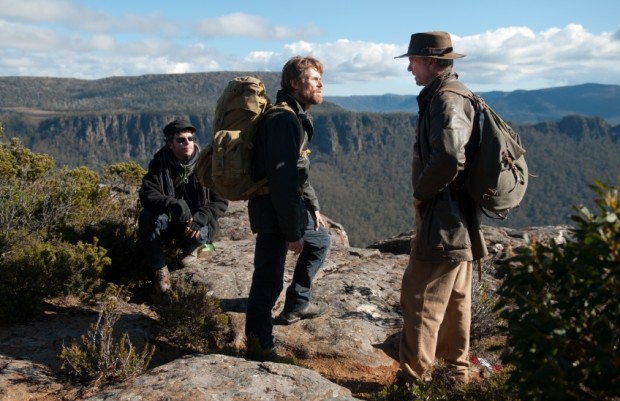
Like a training camp.
Yeah. It’s not a military kind of thing, at all. He actually spent 10 years training under a Navajo Indian master in the wilds of New Jersey or somewhere.
Kind of interesting to kind of think of ‘The wilds of New Jersey.’
No, exactly, but apparently there are wilds there. So he read the script and then we met with him. He prepared some beautiful looking primitive trapping techniques. Snares that you set in the wilderness using what you find in the wilderness. Sticks, ropes, saplings. These are the kind of techniques that were most frequently used by primitive trappers. And then of course we combined that with a kind of technological trapping, like metal snares and of course the gun and the sniper’s rifle that he uses. But one of the things we discovered together was that hunting is a very pure art.
There’s a lot of pride in the hunter’s work and there’s a lot of pride in not causing pain to an animal and having the clean kill. So there’s a whole ethos about it. Concealing your human scent in a particular way so that animals don’t know you’re coming. About treading across the landscape in a certain way so you’re not cracking twigs. Getting up in the morning and listening to the wind and detecting bird movement. It was incredible stuff and we didn’t have space, really, in the film to show a lot of it but when we did, we wanted to make sure it had accuracy. So Willem spent a bit of time learning. Of course he didn’t learn how to survive on his own for a year, but he learned what he needed to to make these sequences look convincing.
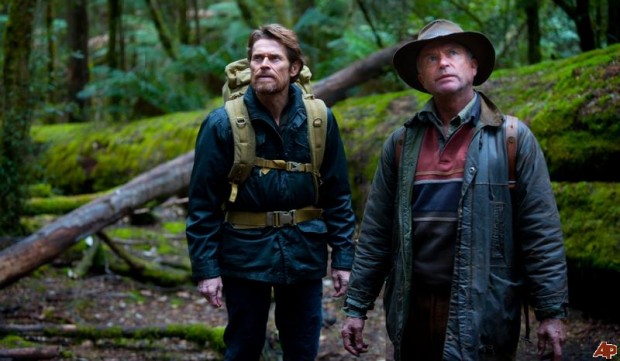
So, talk a little bit about the inspiration for this. And was it always written with Willem in mind or did he come aboard later on in the development?
The script was based on a novel. This was a novel that I had read very early on after its release. I had responded to it. We got hold of the rights, then began writing the script and we were fortunate that the character was always written as not an Australian, but an outsider. He comes into a community. So we could put our casting eyes anywhere in the world. So we really thought about who would it be really cool to see in this film. Trekking through the Tasmanian wilderness.
We made a shortlist and Willem’s name was on that list from the very start and often when I was writing, I’d try to imagine faces to help bring the character to life. And Willem’s face was one that seemed to fit very easily. It was like eight years, but we want to go out to him or any other actor before we were really confident the script was a solid document. That it was a very appealing role for an actor of that caliber. So yeah, eight year later. [Laughs] We managed to get the script to Willem’s management and he responded really quickly that he was interested in having a meeting. So I flew to New York and at the end of that meeting he pretty much said ‘Yea, I’d love to work with you guys.’ So it worked out well.
Willem has a very, very distinctive voice. I think audiences react to that. Personally, I love his voice. When you have a film with such little dialogue, do you add more dialogue because you have this actor?
Well, on the contrary we took it out. I mean, I was attracted to the sparseness of the book, really. There was a lot of sparseness; there wasn’t a lot of talking. There’s probably even less in the film. Often we would get to a scene, and we’d read through the lines that had been there for awhile and we’d all agreed were necessary, but it would get to a point where I’d go to Willem or he’d come to me and say, ‘You know what? I don’t think this bit’s necessary.’ So we were continuing to strip it back even through production. But I would say that Willem, yes, he’s got a very distinctive voice, but he’s also got a very distinctive face. So that rather than the voice really became a big asset to the character and the filming. If he’s not going to be saying much, what’s he thinking? Me, personally, I think he’s got a face that you really want to keep looking at. His face has so much story written on it. It’s like another landscape, really.
And you filmed on location in Tasmania?
Yeah.
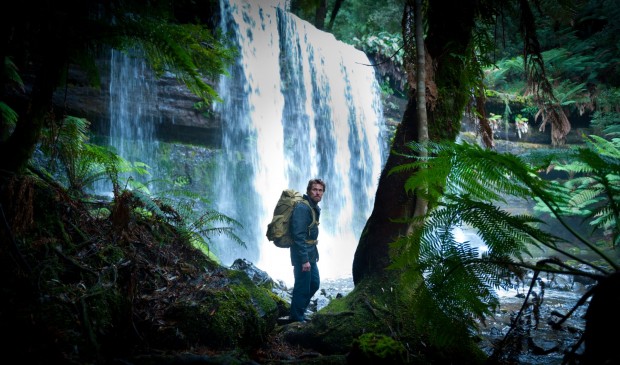
Talk about that experience and is there this kind of outsider mentality going on or is that completely fictionalized with the foresting and things like that?
It’s not fictionalized. No part of what we showed about the debate between loggers and greenies and the hostility towards outsiders in that particular area was invented. A lot of it wasn’t in the book but in researching the adaptation, we became increasingly aware how hot this debate was between the environmentalists and the logging community. How it was a very poignant topical backdrop to this parallel story about the man looking for this supposedly extinct creature.
Every time we got to a point in the script where we felt we were veering into stereotypes or negatively portraying one side or the other of this political debate, we’d hear some story that was far more outrageous than anything we would have put in. So yes, it’s true. Like this pub we filmed in was an actual logging pub. If you walked into that place and people had any suspicion that you were a greenie or an environmentalist, you’d probably be kicked out. The basic truth is that environmentalists, when they setup a blockade or protest, they stop the loggers from being able to work and therefore being able to earn an income and feed their families. So it’s a very hot, emotional debate.
Do you think a lot of the loggers hate the idea of environmentalism or is it that this is their means of making a living?
Yeah, I would say that it would be untrue to say that loggers hate environmentalism. Really, the issue is that if you work for a logging company, you claim either plantation forestry to sustain, work, and clear, or you get allocated pieces of old growth forest. And that’s where the debate is because the environmentalist is trying to stop any old forest being destroyed. The loggers, to sustain their business, can’t survive off of the forest re-plantations alone. They need to incur into old growth forests. They get granted a bit of land to use. Their job is to clear it. Suddenly they’ve got people chaining themselves to trees. You can imagine that’s frustrating for them.
So regardless of what they think about the environment, and most of them love the environment. I mean, people who live in Tasmania, they’ll go walking, fishing, shooting, and hunting and that rest of it. But on this certain day they’ve got a tree to cut down and that’s their job. That’s what they’ve been paid to do. And suddenly they can’t do it. As I said before, it becomes an emotionally raw conflict rather than an intellectual or philosophical conflict. I met people from both sides of the argument who could speak very intellectually, and philosophically, and articulately about what they do. But they don’t always agree. But I should add that this is the background to the story. This is not the story obviously. [Laughs].
Yeah, definitely. This has been released on demand, first. Is this your first experience with that? And what do you feel about that kind of breakdown before a theatrical release? And I assume it’s played elsewhere. So, for me it’s very specific, but for you it might be, ‘Ah, it’s already been released.’
No, it’s interesting because when we were at Toronto and had various American distributors wanting to take the film on, and pitching various models of how it would be distributed, Magnolia pitched us this premium video on demand prior to the theatrical release, and it made a lot of sense. Both, on an economic basis, because as you know, it’s harder and harder to distribute independent films and find an audience and make a profit from it. But a straight theatrical release for a film this size is seen in maybe 25 cities across America. With this premium VOD it’s available everywhere.
The first week has been hugely successful. It surpassed all of their expectations. But I don’t believe it’s going to stop people who want to go and have the theatrical experience from having it. People who prefer going to the movies, and this is a wide screen film, I think it’s really enhanced by going to see it in a cinema. People who live in the 25 cities or wherever it’s going to start its theatrical run is going to do that. But at the same time we’ve had four weeks to build up a word of mouth campaign. To start having the bloggers and the online reviews. So the awareness of the film I think will greatly enhanced. I’m curious to see how it does theatrically, but I think the whole idea is very sound.
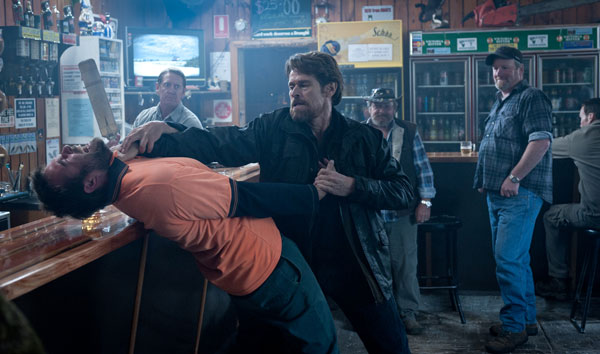
Can we talk about the black-and-white footage?
I think there’s like eight minutes of genuine, existing footage of the Tasmanian tiger, which that particular one died in a zoo in Hobart in 1936 and was the last ever documented Tasmanian tiger in captivity. Since then, people report every year that they’ve seen one, but there hasn’t been a documented sighting since 1936. So we’re lucky that this footage exists. We got a hold of the original 16mm footage from the Hobart Zoo and digitized and kind of blew it up. You can really see what an amazing, unique creature it is.
In modern day, when a creature is on its last legs, there are things like the endangered species list. In your research, did you find that people knew these creatures were on the brink?
By the time there was any kind of environmental or ecological awareness, it was too late to save that creature, that had been hunted down systemically since white settlers first colonized the island of Tasmania, which was really in the 18th century. It was wrongfully reported to be a sheep killer and the government put a bounty on its head. It was only during the first part of the 20th century this environmental kind of consciousness started to affect the way people responded to the environment. And yes, there was an awareness at the time that these animals were in Hobart Zoo, there was an awareness there that the animal’s numbers were critically low, and there were attempts to find breeding pairs and send them off to places to try to recolonize. But it was all too late.
The breeding population had dropped below critical mass. Indirectly, the demise of this creature probably led to the first campaign to save the Tasmanian wilderness. In the 1970s it was under a massive threat. A lot of damning was going to take place. It was going to destroy huge swaths of old growth forests and irreplaceable eco systems. Dr. Bob Brown, who’s the head of the Australian Green party, as a young research scientist, went to Tasmania in the 1960s as part of a research trip to see if there were any Tasmanian tigers still alive and saw what was being threatened to these sections of wilderness around the Franklin river, and launched the campaign to save it. So I think we’ve made the mistake, we’ve learnt from our mistakes. I think part of this mythology of the Tasmanian tiger is still alive allows people to let themselves off the hook that they killed it in the first place.
The Hunter hits limited release on April 6th.

